A relatively young trend that appears in many kitchens around the world is liquid wallpaper. More and more people prefer this finishing material to the usual roll wallpaper. In this article, we will tell you about what liquid wallpaper is, how to apply it on the wall, as an example, we will give a photo and video, after watching which even a beginner will cope with all the tasks.

Liquid wallpaper: what they consist of and what are the varieties
Liquid wallpaper is a special polygamous mixture, which can be filled with the following crushed materials:
Attention! Earned on our website kitchen designer. You can familiarize yourself with it and design your dream kitchen for free! May also come in handy wardrobes designer.
- cotton;
- natural silk;
- oak bark;
- mica;
- gelatin;
- dry algae.
In addition to this crumb, an adhesive base and various dyes are always present in the mixture. It should be remembered that liquid wallpaper can only be used for interior decoration of the room.
Many people mistakenly believe that liquid wallpaper is similar in structure and properties to decorative plaster. This opinion is fundamentally wrong, since the main ingredient of plaster is sand, which is not in liquid wallpaper, but there there may be a variety of fillers such as sequins, mother-of-pearl, marble chips to give an interesting effect. The similarity lies only in the method of applying the composition.

Liquid wallpaper is divided into several types depending on the materials used:
- Silk. The composition contains a large percentage of natural silk fibers. This finishing material can be applied to both concrete and plasterboard walls. Due to the quality of the material, such wallpapers serve for a long time, they are not afraid of direct sunlight, but the price for them is rather big.
- Cotton. For the manufacture of 98% natural cotton and 2% mica are used. The material is very pleasant to the touch and looks attractive.
- Cellulosic. In the composition, most of it is crushed wood, which, of course, is inferior in quality to natural silk and cotton. Hence the low cost of this type of wallpaper. However, they are perfect if the wall to which they are to be applied has micro-cracks. Cellulose will smoothen them, damage and unevenness will not be noticeable.
- Pulp and silk. The composition is a mixture of two types of fibers, as the name implies. This improved version plays the role of the golden mean, represents the best value for money.
How to apply liquid wallpaper?
For work, a set of plastering master is suitable. You will need the following tools:
- paint roller;
- plastic spatula;
- spray gun;
- trowel or construction trowel.
Application takes place with a roller or spray. The choice depends on the consistency of the resulting composition, as well as the surface area that needs to be covered.
Knead liquid wallpaper
The main thing is not to act too quickly, do not make rash decisions. Before you quickly pour the dry mixture into the water and start the mixing process, carefully read the instructions. It describes in detail the actions required from you, the required time, and so on. Here is a list of basic rules:
- The amount of water must strictly correspond to that specified in the instructions.
- First, pour water into the mixing container, and then dilute the dry mixture in it.
- During the first batch, only one bag of the mixture can be used in one container. The entire volume of the material used should not be placed in a container at once.
- In no case should you use part of one package for one batch. Do not even think that you can calculate the required volume of water to be poured. Everything has been calculated for you long ago and described in detail in the instructions.
The composition is best to shrug. Fear not, it is completely safe and will not be able to cause the slightest harm to your skin or health in general. Stirring with a mixer is permissible, but undesirable, since it can cut long fibers in half, and this will change the properties of the mixture.
After the whole mass is saturated with water, leave it for 6-12 hours (the exact time is indicated in the instructions) so that the soaked glue reacts, tying the fibers together.
The first stage is the preparation of the wall for the application of the finishing material
Before applying liquid wallpaper at home, you need to cover the wall with a layer of primer. This layer is required, as it is a guarantee that all properties of liquid wallpaper will be preserved over time.
Surface preparation methods depend on the material from which the wall is made:
- drywall - the entire surface should be primed in 2-3 layers, since the sealed joints can absorb more liquid;
- whitewashing - after removing the whitewash, you will need a high-quality primer layer;
- paint - if a layer of paint is applied professionally, then additional priming is not required;
- Chipboard - 2-3 layers of primer will prevent uneven water absorption;
- wood - even an expensive and high-quality wood species requires priming, since the structure of the wood mass is heterogeneous;
- concrete - a primer is required in 1 layer;
- plywood - the thicker the plywood sheet is, the better liquid wallpaper will hold on it, but a 2-3 layer primer is not excluded.
Choice of colors
By color scheme, wallpapers are divided into two categories:
- Ready to use. All that needs to be done is to dilute the composition with water, stir, wait and apply the contents of the container to the wall. This method is suitable even for a beginner.
- For painting. They are made only in white, further coloring can only be done by a professional in his field. It is carried out by adding dyes, glitters, pearl or marble chips to the composition.
An apartment can be decorated even more interestingly if you create unique drawings on the wall with the help of liquid wallpaper and a little creativity. Obviously, this technology will take more time and effort than simple placement of the mixture, but the results will be worth it. To do this, you must first mark on the wall the landmarks of the desired drawing with a pencil. Next, you need to apply the composition in turn, moving from element to element, gently adjusting the mixture to the borders. It is important to act carefully. As a last resort, the wallpaper can be repaired within two weeks from the moment the layer is applied.
Photo wallpaper is an equally interesting and non-standard option for decorating a room. This finishing material, however, is much more difficult to work with when compared to how liquid wallpaper is applied to walls. The main condition is an absolutely flat gluing surface, otherwise every crack and bend will be visible. In order to tapestry like a professional, you need to plaster the wall, then cover it with a primer, then apply a putty. The final stage will be a special primer for the photowall-paper, on which they already lie.
Technique for applying liquid wallpaper or how to glue liquid wallpaper with your own hands
The technique of applying liquid wallpaper to the walls is not so difficult. Anyone can handle this procedure with the proper effort and patience. For more confidence, you can arm yourself with video tutorials, which are presented in huge numbers on YouTube. A few important tips and tricks:
- Before applying directly to the wall, practice on any other surface. You need to understand how to apply the layer evenly.
- Hold the spatula at a slight angle (literally 5-10 degrees) during the process. Do not press the liquid composition into the wall, on the contrary, apply it easily, leave it airy.
- It doesn't matter which side you start the application - even from the very center of the wall. However, remember that corners are the hardest, and you need to get around them correctly.
- Don't make the layer too thin, otherwise the wall will show through.
- After finishing work, sprinkle the layer with water from a spray bottle and once again go over it with a spatula.
- If a failed snippet appears, don't panic. Failure is easy to fix: just scrape off a piece and apply fresh composition in its place.
Liquid wallpaper care
It is easy to take care of such a coating, liquid wallpaper can be simply vacuumed like a floor. You can wipe the surface with a damp cloth only if you have applied a special protective varnish to the layer of the composition. This colorless varnish is water-based and creates a protective film after spraying. After applying it, liquid wallpaper will no longer be afraid of liquids and dirt, but it will not become 100% moisture-repellent.
Conclusion
Another important detail: do not throw out the remains of the mixture after the completion of the work. You can leave them in a plastic bag and store in a liquid state for up to two weeks. In case of problems with the first layer, it will be easy to get the prepared paste and fix the damaged fragment. You can also dry the mixture and keep it that way indefinitely. To prepare a new composition from this powder, all that remains is to add water and mix.
Summing up, we can say with confidence that applying liquid wallpaper is not such a difficult technique. It is quite capable of being mastered by a beginner without resorting to the help of professionals. Independent work will help you feel even more love for your own apartment, will give you moments of happiness from translating your design idea into reality.
Liquid wallpaper is a non-standard solution for decorating a room, which can add coziness to a room, make it visually lighter and softer. Happy renovation!
Photo: liquid wallpaper in the interior
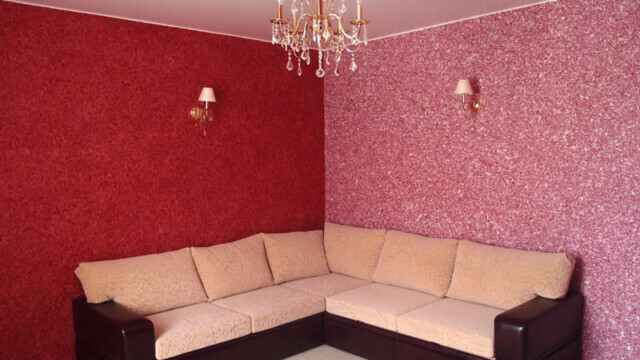
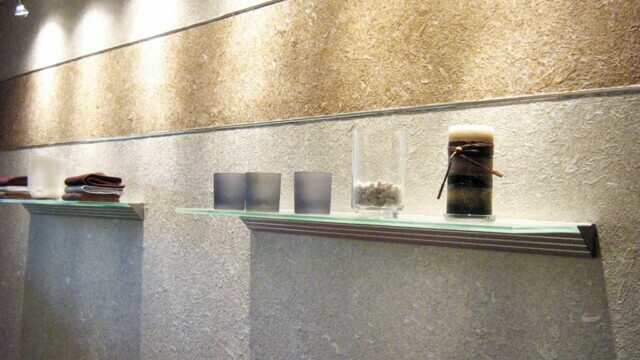
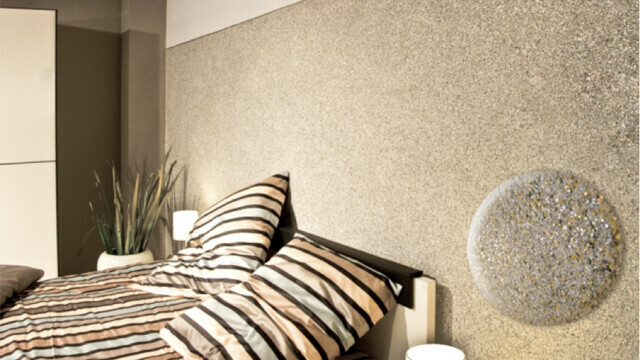
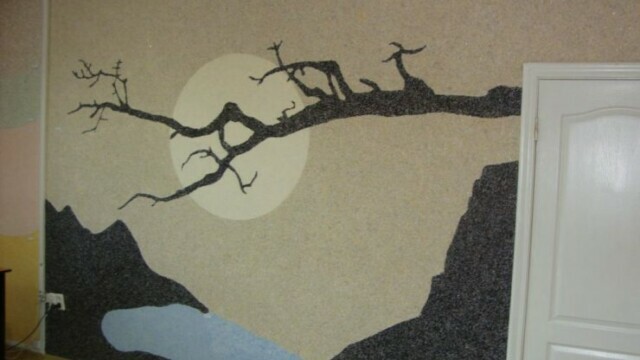
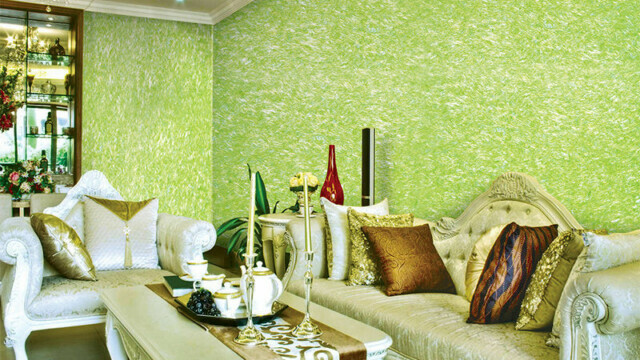
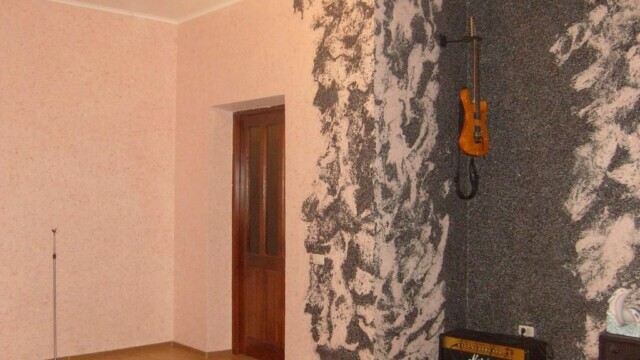
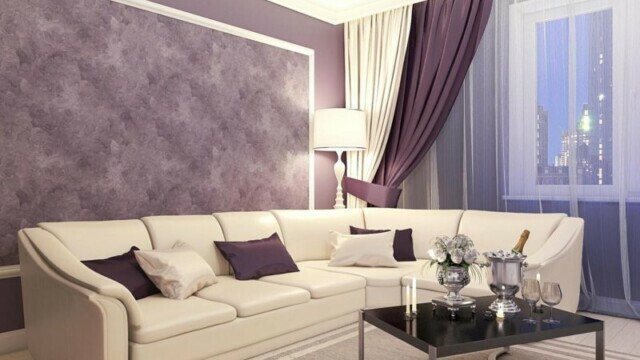
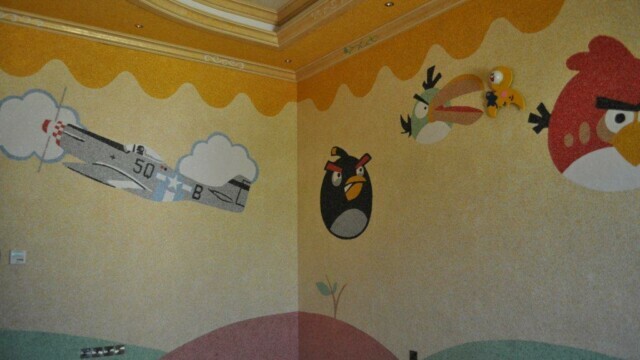
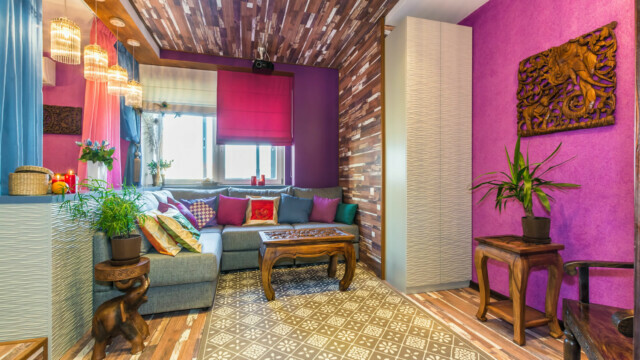
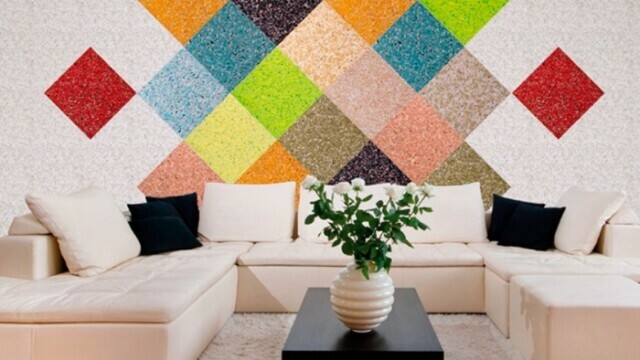
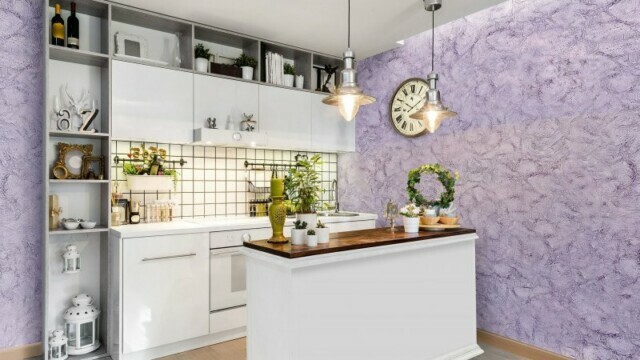
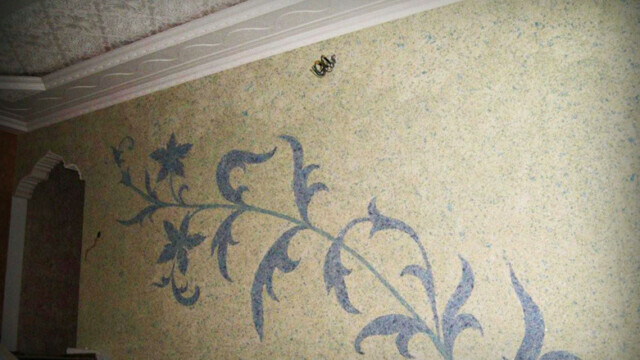
Prev
Next
average rating 0 / 5. Number of ratings: 0
No ratings yet. Be the first to rate.


